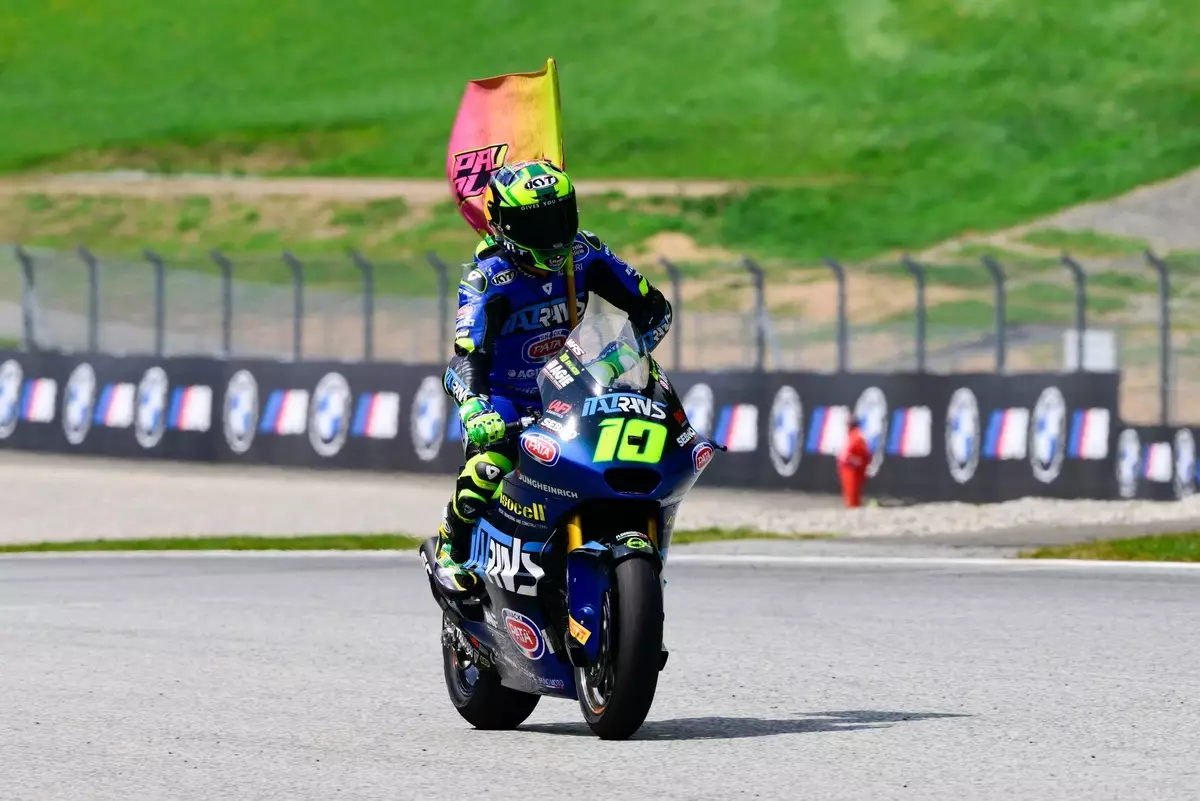The imminent move of Diogo Moreira into MotoGP marks more than just a typical rider transition; it embodies a pivotal moment in the sport’s landscape, reflecting both his talent and strategic industry shifts. At just 21 years old, Moreira has no reason to rest on his laurels but instead appears poised to redefine the emerging talent pipeline in motorcycle racing. His current dominance in Moto2 with Italtrans—claiming multiple victories and challenging for the world championship—serves as a testament to his rapidly rising trajectory. However, this ascent is not merely fueled by raw talent. It signifies a strategic gamble by Honda and the MotoGP paddock, betting on his potential to become a future star capable of competing at the highest level.
The timing of his promotion—most likely confirmed at the Hungarian Grand Prix—underscores the urgency and competitive edge Honda seeks. As the sport reckons with evolving rules and new technical regulations, bringing in a youthful rider like Moreira aligns with Honda’s ambition to stay relevant and competitive in a changing racing landscape. His transition from Moto2 to premier class is not just a natural progression; it’s a calculated move to inject fresh energy and promising prospects into Honda’s factory program.
National Identity and Industry Dynamics: Beyond the Flag
While some may see Moreira’s Brazilian heritage as a narrative element, he dismisses this notion as superficial. His statement that his success in MotoGP hinges on performance rather than nationality exposes a deeper truth: talent and resilience transcend borders. Yet, the return of a South American rider to the top echelon after nearly two decades—since Alex Barros—sounds a symbolic alarm for the sport’s global diversity. Historically, South America has produced exceptional talents, yet recent years have seen a drop in representation at the highest level. Moreira’s entry could rekindle interest and investment from the continent, although this is complicated by commercial realities and sponsorships.
The transition also signals broader geopolitical and business implications. Honda’s move is intertwined with strategic marketing, especially with the upcoming return of MotoGP to Brazil in 2026. Having a Brazilian rider like Moreira on the grid is more than just a sporting choice; it’s a potent promotional tool that Honda is keen to leverage. Such moves demonstrate how industry stakeholders are increasingly looking at rider nationalities as integral to their brand narratives and market expansion strategies, blurring the lines between athletic merit and commercial appeal.
Riders in Flux: The Aftermath of Strategic Decisions
Moreira’s climb not only alters the player landscape but also has significant implications for other seasoned riders and teams. Jack Miller’s potential extension with Yamaha and Pramac suggests a strategic grooming of current talent to align with longer-term goals. Conversely, the uncertainty surrounding Miguel Oliveira’s future—due to injury setbacks and contractual clauses—illustrates how performance and injuries can redefine career trajectories in MotoGP.
This shifting terrain raises critical questions about the stability and fairness of rider contracts, especially when performance-based clauses can threaten careers overnight. Oliveira’s situation is emblematic of the precarious balance between talent, opportunity, and resilience in elite motorcycle racing. For Moreira, though, this transition embodies a rare opportunity to cement his place on the world stage, leveraging his current momentum and Honda’s strategic backing.
Forecasting the Future: A Race Towards the New Era
Honda’s commitment to Moreira, especially with a multi-year deal, is an insightful strategic move, taking into account upcoming technical changes. The switch from 1000cc to 850cc machinery in 2027 promises a significant shake-up in competitive dynamics. By investing early in a promising talent like Moreira, Honda aims to ensure that the transition benefits their team rather than posing a setback. The young rider’s adaptation timetable aligns perfectly with the new regulations, ensuring he’ll be ready to hit the ground running when the new bikes debut.
In this context, Moreira’s rise can be viewed as a catalyst for Honda’s entire approach to future racing endeavors. His youth and recent performances suggest that he could evolve into a defining figure in MotoGP’s next chapter, challenging existing hierarchies and pushing the sport toward new competitive heights. Signalized by Honda’s late but decisive intervention, his move symbolizes a broader industry trend—championing long-term development and embracing the talent necessary to thrive amid technical and commercial upheavals.
In essence, the story of Diogo Moreira’s promising transition from Moto2 to MotoGP is much more than a career milestone; it’s a strategic pivot revealing the sport’s evolving priorities, the importance of national representation, and the relentless pursuit of excellence amid shifting technological landscapes. His journey embodies the hope and innovation that fuel the world’s premier motorcycle racing series, promising an exciting new chapter filled with potential and fierce competition.


Leave a Reply